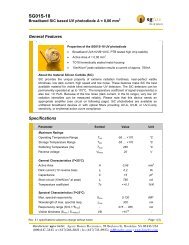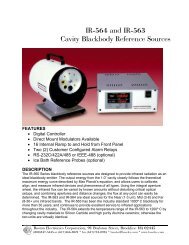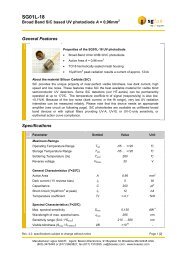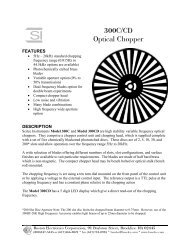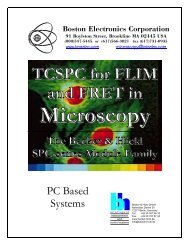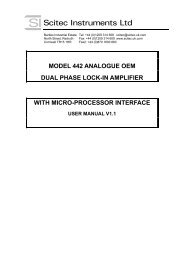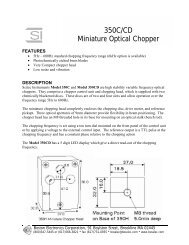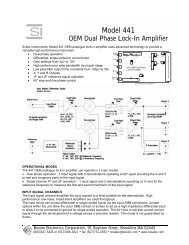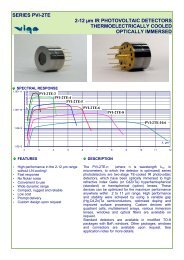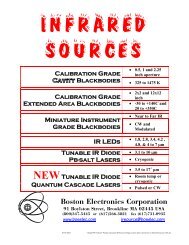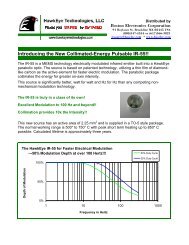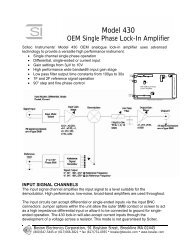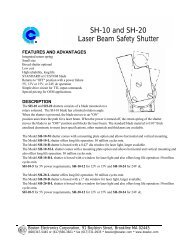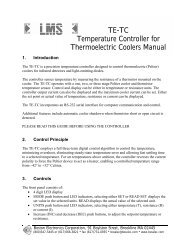IR Detectors from Vigo System - Boston Electronics Corporation
IR Detectors from Vigo System - Boston Electronics Corporation
IR Detectors from Vigo System - Boston Electronics Corporation
You also want an ePaper? Increase the reach of your titles
YUMPU automatically turns print PDFs into web optimized ePapers that Google loves.
Page 2 of 8\\snap105913\SHARE1\Product Literature\<strong>Vigo</strong>\<strong>Vigo</strong> brochure parts\<strong>Vigo</strong> predicting the performance of a photodetector docActive AreaConsider a target about which we wish to measure some optical property. Ifthe image of the target is larger than the photodetector, some energy <strong>from</strong> thetarget falls outside the area of the detector and is lost. By increasing the detectorsize we can intercept more energy. Assuming the energy density at the focal planeis constant in watts/cm 2 , doubling the linear dimension of the detector means thatthe energy intercepted increases by 2 2 4 times. But NEP increases only as4 2 . Conversely, if the image of the target is small compared to the detectorsize, and if there are no pointing issues related to making the image of the targetfall on the photodetector, then halving the linear dimension of the photodetectorwill similarly double S/N, since the input optical signal S stays constant while theNEP DECREASES by a factor of 4 2 . The moral of this story is: Neither throwaway photons nor detector area. Know your system well enough to decide on anoptimized active area.BandwidthError theory tells us that signal increases in a linear fashion but noise (if it israndom) adds ‘RMS’. That is, Signal increases in proportion to the time weobserve the phenomenon, but Noise according to the square root of the observationtime. This means that if we observe for a microsecond and achieve signal-to-noiseof , in an integration time of 100 microseconds we can expect S/N of100 10 . Bandwidth is related to integration time by the formula1f (equation 2)2where is the integration time or “time constant” of the system in seconds. Timeconstant is the time it takes for the detector (or the system) output to reach a value 1 of 1 63%of its final, steady state value. e SignalSignal in all quantum photodetectors is constant versus frequency at lowfrequencies but begins to decline as the frequency increases. The decline is afunction of the time constant. If S low is the signal at f low , a few hertz, the signal atarbitrary frequency f » f low is<strong>Boston</strong> <strong>Electronics</strong> <strong>Corporation</strong>, 91 Boylston Street, Brookline MA 02445(800)347-5445 or (617)566-3821 * fax (617)731-0935 * boselec@boselec.com * www.boselec.com



